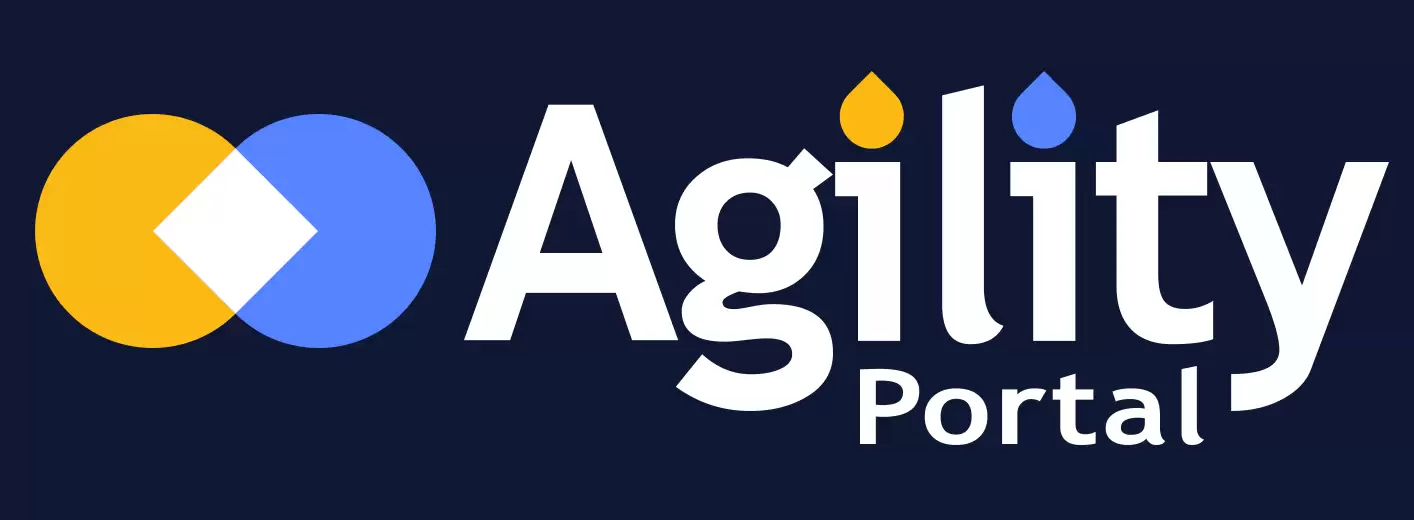Insight Blog
Agility’s perspectives on transforming the employee's experience throughout remote transformation using connected enterprise tools.
8 minutes reading time
(1614 words)
Who Is Considered to Be a Frontline Worker? Frontline Workforce Inclusion Examples
Learn who qualifies as a frontline worker, with examples from healthcare, retail, logistics, and more. Understand their role in workforce inclusion and productivity.
As the global economy moves beyond the immediate aftermath of COVID-19, the focus has shifted from crisis response to building a resilient and inclusive workforce. With hybrid work models now the standard, and AI-driven automation transforming job roles, organizations must prioritize both long-term adaptability and employee well-being.
One pressing aspect of this shift is the growing need for effective conflict resolution strategies, especially in diverse, hybrid teams.
A recent report by McKinsey highlights that over 70% of frontline workers feel their voices are not heard when critical workplace decisions are made, underscoring the need for stronger inclusion efforts. These frontline workforce inclusion examples show that when frontline roles—from delivery drivers to healthcare aides—are integrated into broader organizational planning, workplace cohesion and morale significantly improve.
The pandemic also brought clarity to the distinction between essential and frontline workers, particularly during vaccine rollouts and PPE distribution. While some roles easily transitioned to remote work, others required physical presence—creating new conflict dynamics and stressors.
These complexities revealed how vital it is for managers and employees to be equipped with skills to navigate workplace disputes, improve communication, and manage team conflicts proactively.
By understanding the roles, challenges, and contributions of essential and frontline workers—and by applying inclusive, conflict-aware strategies—organizations can foster a more equitable and productive workplace for all.
Read this article: : Top 6 AI-Powered Project Management Tools To Use In 2023
What exactly are diversity and inclusion?
Diversity refers to the presence of a wide range of perspectives and experiences within a team.
While it often includes important conversations around race and social justice, diversity encompasses much more. It includes differences in gender, sex, socioeconomic status, upbringing, religion, education, sexual orientation, gender identity, ethnicity, neurodiversity, and life experiences.
Inclusion is about ensuring that every individual has fair and equal access to opportunities, education, resources, and recognition—based on the unique attributes that define them.
At its core, diversity and inclusion is about challenging and dismantling implicit bias.
It's a commitment to recognizing that differences are not deficits—and that true strength lies in embracing and valuing those differences.
Frontline Workforce Inclusion Examples
Frontline workforce inclusion examples highlight practical steps organizations can take to ensure equity and engagement for employees in essential, customer-facing, and operational roles.
These workers—often found in healthcare, retail, logistics, and hospitality—are crucial to daily operations but are frequently overlooked in company-wide communications and decision-making.
One standout example is providing multilingual communication tools, ensuring that all frontline employees understand company updates regardless of language barriers. Another is implementing mobile-first intranet platforms, like AgilityPortal, which give frontline workers real-time access to HR resources, training, and important announcements—bridging the gap between desk-based and deskless teams.
Other frontline workforce inclusion examples include employee recognition programs tailored to shift-based roles, ensuring achievements are acknowledged publicly, and inclusive feedback channels that allow frontline voices to shape policy and workplace improvements.
In the healthcare industry, inclusive scheduling systems that respect work-life balance have shown measurable success in improving retention.
These efforts not only improve morale and reduce turnover but also build a culture of trust and belonging—where every team member, regardless of their role, feels valued and included.
What is Diversity in the Workplace?
Workplace diversity goes beyond simply having representation from different racial or ethnic groups.
While building a team that reflects ethnic diversity is important, focusing solely on visible traits can come across as performative and may unintentionally marginalize the very communities it aims to include.
Authentic diversity and inclusion involve recognizing and valuing the less visible aspects of identity—such as socioeconomic background, immigration status, neurodiversity, and educational experiences. Inclusive leaders understand that real representation isn't just about appearance; it's about embracing the full range of human differences.
A truly diverse workplace includes people from various national origins, genders, and cultural and economic backgrounds. But diversity alone isn't enough.
The goal is to cultivate a culture of belonging—where every individual feels respected, valued, and genuinely part of the team.
When inclusion is deeply embedded in the organization's values, it creates an environment where all employees, regardless of their background, can thrive.
Who Is Considered to Be a Frontline Worker?
A frontline worker is someone whose job involves direct interaction with customers, clients, patients, or the general public—and who typically performs their duties on-site rather than remotely.
These individuals are essential to the day-to-day operations of businesses, healthcare facilities, public services, and many other industries.
Common examples of frontline workers include:
- Healthcare professionals (nurses, paramedics, medical assistants)
- Retail employees (cashiers, store clerks, customer service reps)
- Hospitality staff (hotel receptionists, housekeeping, servers)
- Logistics and delivery personnel (drivers, warehouse workers)
- Manufacturing and factory workers
- Public safety officers (police, firefighters, EMTs)
- Teachers and school support staff
- Field technicians and utility workers
Key Characteristics of Frontline Workers:
- Direct public interaction: They often represent the face of the organization to customers.
- On-site responsibilities: Their work cannot typically be performed remotely.
- Essential roles: They keep critical operations running, especially in times of crisis (e.g., during the COVID-19 pandemic).
- Limited access to traditional office resources: Unlike desk-based employees, frontline workers may lack easy access to internal systems, communication tools, or HR services.
Understanding who frontline workers are is crucial for businesses looking to improve support, communication, and productivity through technology integration.
7 Ways to Promote Diversity and Inclusion
Transforming workplace culture isn't easy—but it's necessary.
Many organizations hesitate because they're unsure where to begin or feel discouraged by past efforts that didn't deliver results.
When diversity programs fall short, companies may mistakenly conclude they're ineffective. In reality, failure often stems from the approach, not the goal.
Inclusion is no longer a bonus—it's a business essential. In a world where transparency and values matter more than ever, companies like Google have shown that investing in inclusive workplace culture directly impacts performance and innovation. If your organization is ready to evolve, here's how to take meaningful action:
- Rethink Recruitment - Make room for talent from all walks of life by eliminating unnecessary hiring barriers—such as rigid educational requirements or exclusive industry experience. Highlight inclusive hiring practices in job listings and ensure your interview panels reflect diversity in both background and thought.
- Empower Employee-Led Communities - Create internal groups where employees with shared identities or interests can connect and thrive—think women in engineering, LGBTQ+ in tech, or cultural heritage circles. These spaces foster belonging and psychological safety.
- Lead Inclusively - When leadership reflects the diversity of your workforce, it sends a clear message: growth is possible for everyone. Representation at the top isn't symbolic—it shapes policies and inspires trust.
- Foster Open Dialogue - Don't operate in a vacuum. Establish channels—like listening sessions, anonymous surveys, or town halls—where feedback flows freely. Most importantly, act on that feedback. Culture is shaped by action, not intention.
- Be Visible Allies - Inclusive cultures don't remain silent on social justice. Take firm, public stances against inequality in all forms. Employees must see that your values are more than statements—they're reflected in daily operations and leadership decisions.
- Encourage Diverse Perspectives - Innovation thrives on variety. Promote idea-sharing from all levels of your organization. Challenge groupthink, invite quiet voices, and reward constructive dissent.
- Ground Your Strategy in Evidence - The data is clear: diverse teams are 35% more likely to outperform their peers (McKinsey). Share these insights with your workforce to reinforce why inclusion matters—not just ethically, but strategically.
How Technology Integration in Business Boosts Frontline Employee Productivity
For many business leaders, deciding which digital tools to invest in can be overwhelming.
The key is to focus on one critical question: How can technology improve employee productivity and well-being, especially for frontline workers? By addressing the real-world needs and daily challenges of your frontline staff, companies can make more informed decisions and unlock greater organizational benefits.
Here are ten impactful areas where technology integration in business directly supports frontline teams and boosts productivity:
- Improved Communication - Real-time messaging apps, video conferencing tools, and digital noticeboards reduce miscommunication and keep everyone in the loop, especially in fast-paced environments.
- Smart Training Solutions—Online learning platforms, mobile courses, and immersive training tools like AR/VR can help workers upskill quickly and confidently without leaving the job site.
- Enhanced Workplace Safety - From wearable safety monitors to digital checklists and alert systems, modern tools help keep employees safe in high-risk environments.
- Increased Efficiency Through Automation - Looking for ways to streamline workflows? Automating repetitive tasks helps reduce human error and allows employees to focus on higher-value work.
- Stronger Customer Service Tools - CRM systems and AI-powered chat solutions help employees deliver faster, more personalized service, boosting customer satisfaction and team performance.
- Accurate Data Collection - Mobile apps for field reporting, inspections, and inventory allow frontline workers to collect and analyse data on the go, supporting better decisions and insights.
- Mobility and Flexibility - Mobile-first solutions empower workers to remain productive from any location, increasing job satisfaction and reducing staff turnover.
- Seamless Collaboration - Collaboration platforms enable teams to share files, assign tasks, and communicate across departments—even if they're working remotely.
- Centralised Knowledge Management—Easy access to guides, policies, and training materials ensures that workers can find answers quickly, improving confidence and performance.
- Time and Task Management Tools - Apps for scheduling, time tracking, and daily task management help employees stay organized and efficient throughout the day.
If you're searching for the best digital tools for frontline workers or wondering how to integrate technology into business operations, identify your team's core needs.
Then, invest in solutions that align with both employee experience and organizational goals.
Section 7: [FAQ Word Count: 300-500 words]
Categories
Blog
(2565)
Business Management
(314)
Employee Engagement
(204)
Digital Transformation
(171)
Intranets
(119)
Growth
(114)
Remote Work
(61)
Sales
(48)
Collaboration
(37)
Culture
(29)
Project management
(29)
Customer Experience
(25)
Knowledge Management
(21)
Leadership
(20)
Comparisons
(5)
Ready to learn more? 👍
One platform to optimize, manage and track all of your teams. Your new digital workplace is a click away. 🚀
Free for 14 days, no credit card required.













